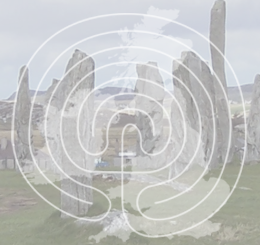St Augustines Well, Cerne Abbas
All the following details were made available on the information board inside the burial ground situated above St Augustine’s Well;
‘Legend says that St Augustine once visited Dorset. While there he met some shepherds grazing their flocks and asked them whether they would prefer beer or water to drink. The temperate shepherds replied “Water”, whereupon St Augustine struck the ground with his staff, crying “Cerno El” as the water gushed out. The words were, supposedly, a pun on Cernel, the old name of the village and meant “I perceive God”.
 ]It is thought that the above legend was invented by the Benedictine monks of Cerne Abbey to serve as an attraction for pilgrims. Closer to the truth, probably, is the story of St Edwold*, a member of the Mercian royal family, who one day had a vision of a silver well. He went wandering through the countryside, and when he came to Cerne he gave some silver pennies to a shepherd in return for bread and water. The shepherd then showed him a well where he could drink and St Edwold recognised it as the well of his vision. He built a small hermitage by the spring and lived there until his death in 871. In 1620 Thomas Gerard wrote in his ‘Survey of Dorsetshire’ that the well was “heretofore covered with a chapel to St Augustine”. But the chapel was probably swept away along with a huge quarry of cut stone and rubble as Cerne Abbey was demolished following its dissolution during the reign of Henry VIII.
]It is thought that the above legend was invented by the Benedictine monks of Cerne Abbey to serve as an attraction for pilgrims. Closer to the truth, probably, is the story of St Edwold*, a member of the Mercian royal family, who one day had a vision of a silver well. He went wandering through the countryside, and when he came to Cerne he gave some silver pennies to a shepherd in return for bread and water. The shepherd then showed him a well where he could drink and St Edwold recognised it as the well of his vision. He built a small hermitage by the spring and lived there until his death in 871. In 1620 Thomas Gerard wrote in his ‘Survey of Dorsetshire’ that the well was “heretofore covered with a chapel to St Augustine”. But the chapel was probably swept away along with a huge quarry of cut stone and rubble as Cerne Abbey was demolished following its dissolution during the reign of Henry VIII.
As with all holy places there are many superstitions attached to the well.
1) If you go down to the well at dawn on Easter Day, you will see over your shoulder and reflected in the water the faces of those who will die that year.
2) Drinking the waters was said to be a cure for infertility, and helpful for those who wished to become pregnant. As the water is full of iron this is a perfectly logical supposition.
3) If you pick a laurel leaf and dip it in the water and press it to the eyes, it will cure soreness of the eyes.
4) It was held to be of benefit to dip a new-born baby in the waters as the suns rays first touched them. (This could well be part of a total immersion Christian baptism, or even part of a pagan ritual pre-dating Christianity).
5) The well is also known as a wishing well. Girls were recommended to go there and pray to St Catherine for a husband, turning around three times as they did so. On the hill directly above the well there once stodd a chapel dedicated to St Catherine, and down here at the well you can see a Cetherine Wheel carved upon the left-hand upright stone flanking the wall.
Until the last war the waters were regularly used by the villagers living in Abbey Street for their drinking water. Now it is still good to drink in the springtime when it is flowing freely, but by the late summer and autumn the flow is much less vigorous and the water can become stagnant. Not long ago a three foot eel was found in the central rectangle, living under a pile of damp leaves!
Whatever its history, the well is a holy place, full of peace and quiet. Respect it, and take some of its peace with you into the busy world.
* St Edwold was the brother of St. Edmund the Martyr, King of East Anglia.
Note: The above picture was taken in September 2011 and clearly shows rags tied to the tree beside the well.




Recent Comments